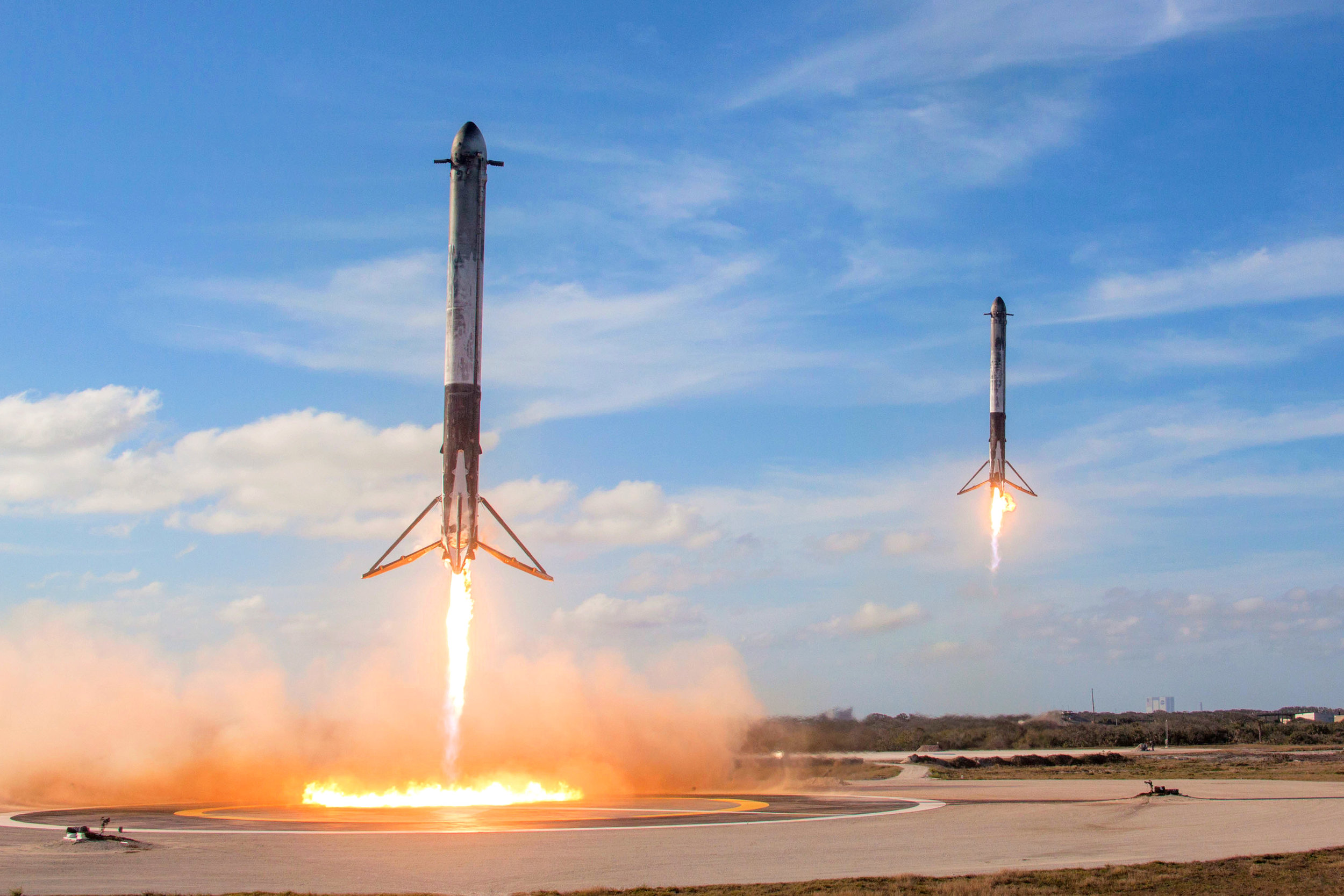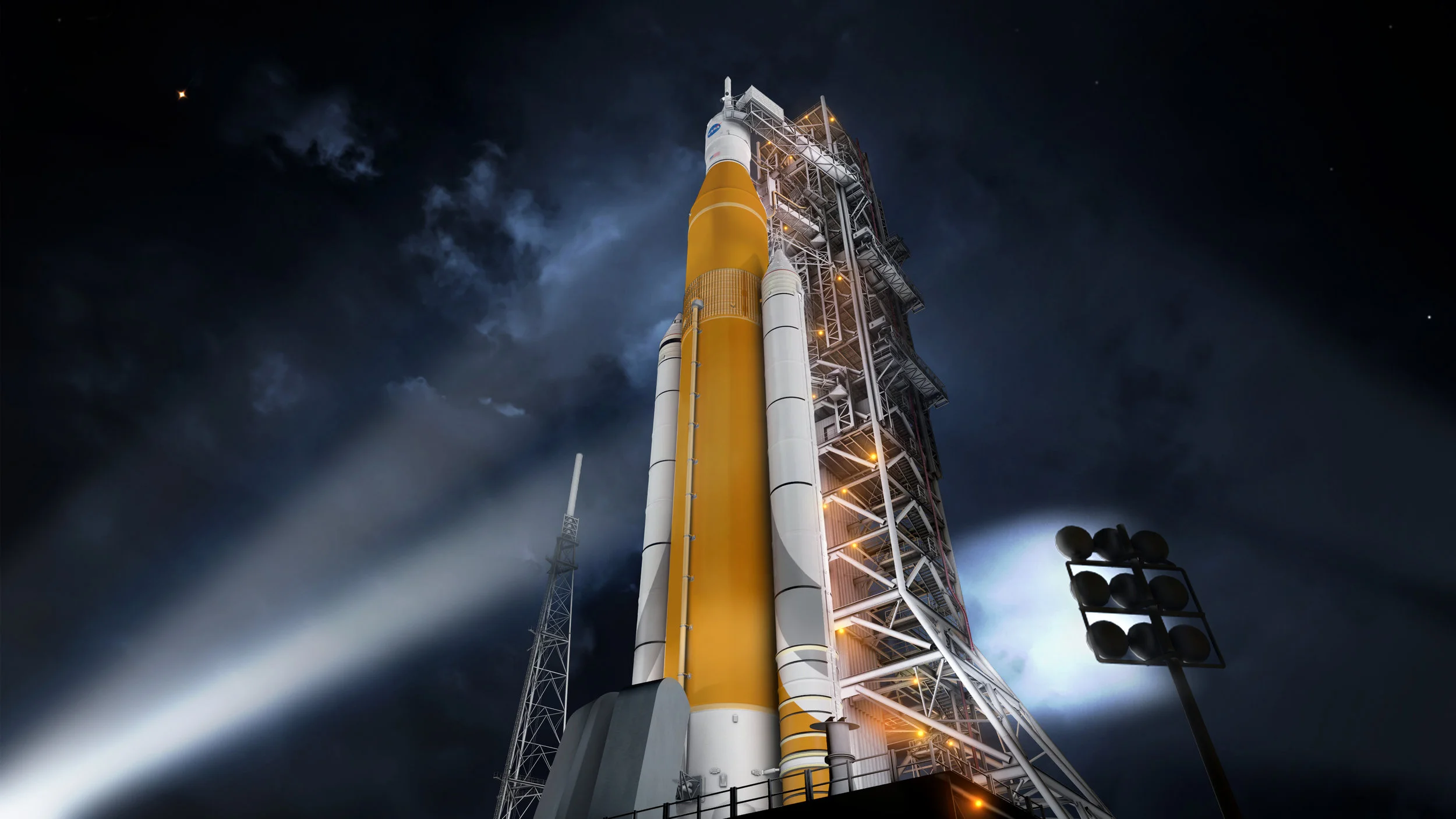April 11, 2019 — By Josh Dinner
Elon Musk’s private space company SpaceX completed the first official mission of its Falcon Heavy rocket, launching Arabsat-6A into orbit around the Earth April 11, 2019. This was the second launch of the Falcon Heavy, which currently stands as the world’s most powerful rocket in operation. A triple-booster variant of SpaceX’s Falcon 9, Falcon Heavy’s maiden flight took place in February 2018, and launched company CEO Elon Musk’s Tesla Roadster into solar orbit.
Falcon Heavy and Arabsat-6A launched at 6:35pm EDT from the Kennedy Space Center’s historic Launch Complex 39A. Within eight minutes of liftoff, the vehicle’s two side boosters detached from the core stage, completed boost-back and entry burns, and successfully touched down in unison at Landing Zones 1 and 2 at Cape Canaveral Air Force Station. Minutes later, SpaceX executed another historic first for the company, and successfully landed the Falcon Heavy center core booster on the Of Course I Still Love You drone ship in the Atlantic Ocean.
SpaceX Patch and Arabsat-6A satellite being prepared in a Lockheed Martin clean room. Image credit: Lockheed Martin, SpaceX, and Arabsat.
The rocket’s upper stage inserted the Arabsat-6A payload into a geostationary transfer orbit, and deployed the satellite about 34 minutes after launch. Arabsat-6A is a communications satellite assembled by global security and aerospace company Lockheed Martin, and will deliver internet, television, and cellular services from a geostationary orbit above the Middle East, northern Africa, and parts of Europe.
Last year’s flight — a test demonstration of the rocket’s capabilities — successfully returned the vehicle’s side boosters to Florida’s Space Coast, landing simultaneously on SpaceX’s Landing Zones 1 and 2. Only a single rocket engine on the rocket’s core stage was able to reignite upon reentry, which provided insufficient thrust to slow the vehicle during descent. The booster narrowly missed its intended landing on Of Course I Still Love You.
Falcon Heavy side boosters above Landing Zones 1 and 2, February 2018. Photo credit: SpaceX
For its first official mission, Falcon Heavy did not disappoint. More powerful than last year’s triple-booster rocket, this launch vehicle flew using SpaceX’s upgraded Block 5 configuration. And every part of this rocket launched brand new. The Block 5 booster is the final version for the first stages of SpaceX’s Falcon 9 and Falcon Heavy rockets. Built to be fully reusable, Block 5 boosters are designed to fly ten or more times without refurbishment. “With some refurbishment, a Block 5 first stage should be able to launch a hundred times,” Elon Musk said at a press briefing last year.
In addition to 5 million pounds of thrust produced by Falcon Heavy’s 27 Merlin Engines and an upgraded thermal protection system, the Block 5 booster is also designed to meet NASA’s requirements for commercial crew launches. SpaceX launched its first Crew Dragon capsule on a Falcon 9 Block 5 last month for Demonstration Mission-1 (DM-1), and is expected to perform a crewed mission to launch astronauts to the International Space Station later this year.
Falcon Heavy lays inside SpaceX’s Horizontal Integration Facility. Image credit: SpaceX
The Block 5 configuration was also designed to meet the Air Force’s criteria for national security launches, so Falcon Heavy’s success is huge win for SpaceX. The rocket’s reusability significantly lowers the cost of launching payloads aboard a Falcon Heavy in contrast to comparable rockets. The vehicle’s incredible lift capability puts SpaceX in a competitive position to gain military and NRO contracts almost exclusively awarded to United Launch Alliance’s Delta IV Heavy rocket.
Falcon Heavy’s next appearance is expected after minor refurbishments to its landed side-boosters, launching the Department of Defense’s Space Test Program-2 payload — composed of 25 small space craft. An exact date has not been announced. Additionally, NASA’s recent commitment to land American astronauts on the Moon by 2024 has put Falcon Heavy further into the spotlight, as the space agency considers SLS substitutions for an aggressive timeline to achieve its Moon 2024 goal.














